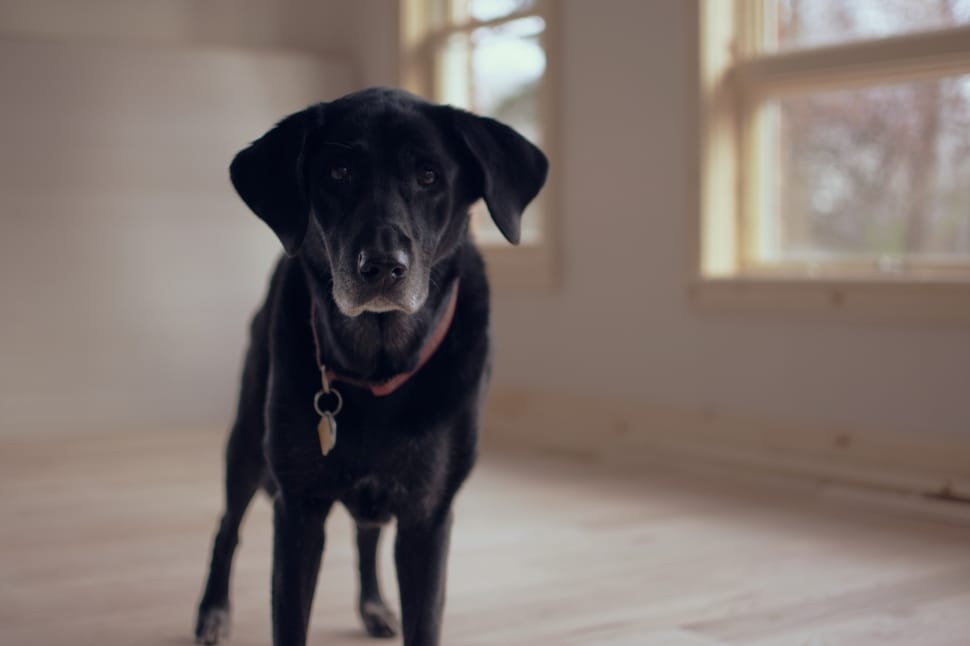Are you considering dog-sitting in your apartment but unsure if it’s a feasible option?
Caring for someone else’s furry friend in a limited space can be a bit challenging, but with the right approach and planning, it’s absolutely possible.
In this article, we’ll explore tips and strategies to ensure a comfortable and enjoyable dog-sitting experience in an apartment setting, keeping both the canine guest and your neighbors happy.
Key Takeaway
| Key Takeaways | Summary |
|---|---|
| Can You Dog Sit In An Apartment? | Dog sitting in an apartment is possible if your lease allows pets and you abide by any restrictions or requirements set by the landlord. |
| What Is a Dog-friendly Apartment? | A dog-friendly apartment accommodates the legal requirements of pet ownership and provides a comfortable living environment for both the owner and the pet. |
| Is It OK To Have a Dog in an Apartment? | Having a dog in an apartment is generally okay if you consider factors like lease rules, breed, exercise, training, noise levels, and cleanliness. |
| How Do You Get Around Dog Restrictions in an Apartment? | Respect the rules, communicate with your landlord, provide references, suggest a trial period, offer a pet deposit, create a pet resume, or consider ESA/service dogs (if applicable). |
| Is It Hard To Take Care of a Dog in an Apartment? | Taking care of a dog in an apartment can be challenging but manageable with proper planning, effort, and consideration of factors like breed, temperament, exercise, and space management. |
Can You Dog Sit In An Apartment?

You can dog sit in an apartment if your lease is allowing pets and pet sitting.
If pets are allowed, there may still be restrictions or requirements set by the landlord, such as registering with the property management company or providing proof of insurance.
In general, most leases will include a clause that states whether or not you are allowed to have pets in your apartment. If it does not explicitly state that you can have pets, then it is likely that you cannot bring in any additional animals for pet sitting.
Additionally, some landlords may also limit the number of pets allowed in an apartment, so make sure to check with them before bringing in any extra animals.
It’s also important to note that even if your lease allows for pets, there may be restrictions on pet sitting. For example, some landlords may require that all pet sitters be registered with their property management company or provide proof of insurance.
Before deciding to dog sit in an apartment, make sure to read through your lease agreement carefully and talk to your landlord about any potential restrictions or requirements they may have.
Doing so will help ensure that both you and your furry friend stay safe and comfortable!
What Is a Dog-friendly Apartment?

A dog-friendly apartment is a living space that not only allows tenants to have dogs but also provides an environment that is comfortable, safe, and suitable for both the pet and the owner.
This type of rental typically requires an additional pet deposit or fee, as well as proof of vaccinations and other relevant paperwork. Some apartments may also have breed or size restrictions for dogs.
There are two main aspects to consider in a dog-friendly apartment: the legal side and the comfort side.
Legal Side:
- Pet Policies: Before renting an apartment, it’s essential to review the landlord’s pet policies. Some apartments have strict no-pet policies, while others allow pets with specific restrictions (such as breed, size, or number of pets). Make sure to read and understand the lease agreement’s pet clause and comply with the rules set by the landlord or property management company.
- Pet Deposits and Fees: Many dog-friendly apartments require pet owners to pay a pet deposit or a non-refundable pet fee. This money covers potential damages caused by the pet during the lease period. Additionally, some apartments may charge a monthly pet rent. Ensure you’re aware of these costs before signing the lease.
- Local Laws and Regulations: Familiarize yourself with local laws and regulations related to pet ownership, such as leash laws, vaccination requirements, and noise ordinances. Abiding by these rules will help avoid conflicts with neighbors and authorities.
Comfort Side:
- Size and Layout: Consider the size and layout of the apartment when looking for a dog-friendly space. Dogs need enough room to move around, play, and sleep comfortably. An open floor plan without too many sharp corners or small spaces is ideal. Also, take into account the size and energy level of your dog – larger breeds or more active dogs may require more space.
- Outdoor Access: Dogs need regular exercise and bathroom breaks, so easy access to outdoor spaces is crucial. Look for apartments with nearby parks, dog runs, or walking paths. If possible, choose a ground-floor apartment to make it easier for your dog to go in and out.
- Flooring: Hard flooring, such as tile or laminate, is preferable in a dog-friendly apartment. These surfaces are more resistant to scratches and easier to clean than carpets. If the apartment has carpeting, consider using area rugs or pet mats to protect the floors.
- Noise Levels: Dogs can be sensitive to loud noises, so look for an apartment in a quiet neighborhood or one with soundproofing features. This will help keep your dog calm and less stressed.
- Pet Amenities: Some dog-friendly apartments offer additional amenities for pets, such as on-site pet washing stations, dog parks, or even pet-sitting services. These extras can make living with your dog more enjoyable and convenient.
In summary, a dog-friendly apartment is one that accommodates the legal requirements of pet ownership and provides a comfortable living environment for both the owner and the pet.
Is It OK To Have a Dog in an Apartment?
Yes, it is generally okay to have a dog in an apartment, but there are several factors to consider before bringing a furry friend into your living space.
Here are some key points to keep in mind:
- Check your lease and building rules: Some apartments have specific rules regarding pet ownership, including restrictions on breeds, and sizes, or even a complete ban on pets. Always check your lease agreement and consult with your landlord or building management before getting a dog.
- Choose the right breed and size: Certain dog breeds adapt better to apartment living than others. Small to medium-sized dogs with lower energy levels, like French Bulldogs or Cavalier King Charles Spaniels, are often more suitable for apartments. However, some larger breeds, such as Greyhounds, can also be suitable if they have a calm temperament and get regular exercise.
- Provide enough exercise and mental stimulation: Dogs need daily physical activity and mental stimulation to stay healthy and happy. Make sure you have access to nearby parks, walking paths, or dog-friendly areas where your dog can exercise and socialize with other dogs.
- Proper training and socialization: Training and socializing your dog from a young age will help them become well-behaved and adaptable to different environments. This is especially important in an apartment setting, where they may encounter neighbors, children, and other pets.
- Consider noise levels: Dogs can be noisy, which may disturb your neighbors. Choose a breed that is less prone to barking or invest in training to minimize excessive noise.
- Maintain cleanliness: Keep your apartment clean by regularly grooming your dog, cleaning up after them, and providing designated areas for eating, sleeping, and playing.
- Be respectful of neighbors: Ensure that your dog is well-behaved and does not cause disturbances or damage to common areas in the building.
How Do You Get Around Dog Restrictions in an Apartment?
It’s important to respect the rules and regulations set by your apartment building or landlord regarding dog restrictions.
Here are a few suggestions on how to approach the situation:
- Communicate with your landlord: Have an open and honest conversation with your landlord about your desire to have a dog in the apartment. Explain the reasons why you want a dog and provide information about the specific breed and its temperament. Your landlord may be more receptive if they understand your intentions and commitment to being a responsible pet owner.
- Provide references: Offer references from previous landlords or neighbors who can vouch for your responsibility as a pet owner. This can help reassure your current landlord that you will take proper care of the property and minimize any potential issues.
- Suggest a trial period: Propose a trial period where you can demonstrate your ability to responsibly care for a dog in the apartment. If everything goes smoothly during this time, your landlord may be more open to lifting the restrictions.
- Offer a pet deposit: Some landlords may be more willing to accept dogs if you offer to pay an additional pet deposit. This provides a financial safety net for potential damages or cleaning costs related to your dog.
- Create a pet resume: Put together a pet resume that includes details about your dog’s breed, age, size, temperament, training, and vaccination history. This can help show your landlord that you are serious about being a responsible pet owner.
- Consider emotional support animals or service dogs: If you have a legitimate need for an emotional support animal (ESA) or a service dog, you may be able to bypass certain dog restrictions under the Fair Housing Act (FHA) or Americans with Disabilities Act (ADA).
Is It Hard To Take Care of a Dog in an Apartment?
Taking care of a dog in an apartment can be more challenging compared to a house with a yard, but it’s definitely manageable with some planning and effort.
Here are a few factors to consider when raising a dog in an apartment:
- Size and breed: Smaller breeds are generally better suited for apartment living, as they require less space to move around. However, some larger breeds, like Greyhounds, can also adapt well if they receive proper exercise.
- Temperament: Choose a dog with a calm and adaptable temperament. Some breeds are more suited for apartment living due to their lower energy levels and ability to cope with limited space.
- Exercise and mental stimulation: Ensure your dog gets enough physical activity and mental stimulation daily. Plan regular walks, playtime, and training sessions to keep your dog happy and healthy. Dog parks and group playdates can be great options for socialization and exercise.
- Noise control: Dogs can be noisy, and excessive barking might disturb neighbors. Invest time in training your dog to minimize barking and teach them to be quiet on command.
- Potty training: Establish a consistent routine for bathroom breaks. You may need to use indoor potty solutions like pee pads or artificial grass trays if you don’t have easy access to outdoor spaces.
- Space management: Make the most of your available space by creating designated areas for your dog’s bed, toys, and feeding station. Keep your apartment clean and clutter-free to prevent accidents and ensure your dog’s safety.
In Conclusion
In conclusion, dog sitting in an apartment can be a rewarding experience for both you and the canine guest, as long as you take the necessary steps to ensure their comfort and well-being.
By considering factors like breed, temperament, exercise, and space management, you can successfully create a welcoming environment for your temporary furry companion.
With proper planning, patience, and adaptability, you’ll be able to provide a safe and enjoyable haven for dogs in your apartment, making dog sitting not only feasible but also a delightful venture for all involved.





Leave a Reply